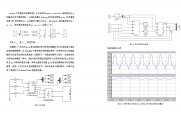电力谐波检测与监测技术研究

电力谐波检测与监测技术研究(任务书,外文翻译,论文16000字)
摘 要
近年来,随着电力电子技术的发展,电网中具有的冲击性、非线性和不平衡的用电特性的负荷不断地增加,使电网中产生了大量的谐波。电网中的谐波污染越来越严重,已经影响到了用户使用的安全性和供电质量,因此电网谐波污染的治理日益被大家所关注。
首先,本文针对谐波问题进行了介绍,叙述了谐波产生的原因、危害等问题,并大致介绍了现在使用的多种谐波检测方法。其次重点研究了目前电力谐波监测系统大多采用的基于FFT算法和瞬时无功功率理论的谐波电流的检测方法,并对这两种方法进行了基于matlab7.0的仿真验证。再次,对这两种仿真结果进行了分析比较。
电力谐波检测系统可用于单相电路、三相平衡系统以及三相不平衡系统,为实时、连续的谐波监测提供了一种实用而有效的方法。
关键词:谐波检测 FFT 瞬时无功功率理论 仿真
Harmonic detection and monitoring of Power Technology
Abstract
In recent years , with the development of power electronics technology , grid nonlinear, impact resistance and electrical characteristics of load imbalance increases, a large amount of harmonics. Grid harmonic pollution is worsening, affecting the quality and safety of the power supply used by the user , so the harmonic pollution control and more attention.
Firstly, for the harmonic problems were introduced, describes the harmonic causes, hazards , and generally describes the various harmonic detection methods now in use. Second, focus on the detection method based on harmonic current FFT algorithm and instantaneous reactive power theory of harmonic current power monitoring systems are mostly used , and these two methods of simulation -based verification matlab7.0 . Again, these two simulation results are analyzed and compared.
Power harmonic detection system can be used for single -phase circuit , three phase systems, and three-phase unbalanced system for real-time , continuous harmonic monitoring provides a practical and effective way .
Keywords:Harmonic detection;FFT;Instantaneous reactive power theory;Simulation


目 录
摘要 I
ABSTRACT II
第一章 绪论 1
1.1背景及意义 1
1.2电力谐波问题的相关概述 1
1.3课题的研究现状和研究动态 6
1.3.1谐波分析与检测研究现状 6
1.3.2电力谐波检测系统的发展现状及趋势 10
1.4本文主要完成的工作 12
第二章 FFT算法原理 13
2.1傅里叶变换理论 13
2.1.1连续傅里叶变换(FT) 13 [资料来源:https://www.doc163.com]
2.1.2 离散傅里叶变换(DFT) 13
2.2快速傅里叶变换(FFT)算法 15
2.3信号分解为傅里叶级数 18
第三章 瞬时无功功率理论 21
3.1 αβ 坐标系下的瞬时无功功率理论 21
3.2 dq0 坐标系下的广义瞬时无功功率定义 26
3.3 本章小结 29
第四章 基于FFT和瞬时无功功率理论的谐波检测验证 30
4.1基于FFT的谐波检测实验验证 30
4.2基于瞬时无功功率理论的谐波检测实验验证 34
4.3两种检测方法的比较 37
第五章 总结与展望 39
5.1全文总结 39
5.2工作展望 39
[资料来源:Doc163.com]
